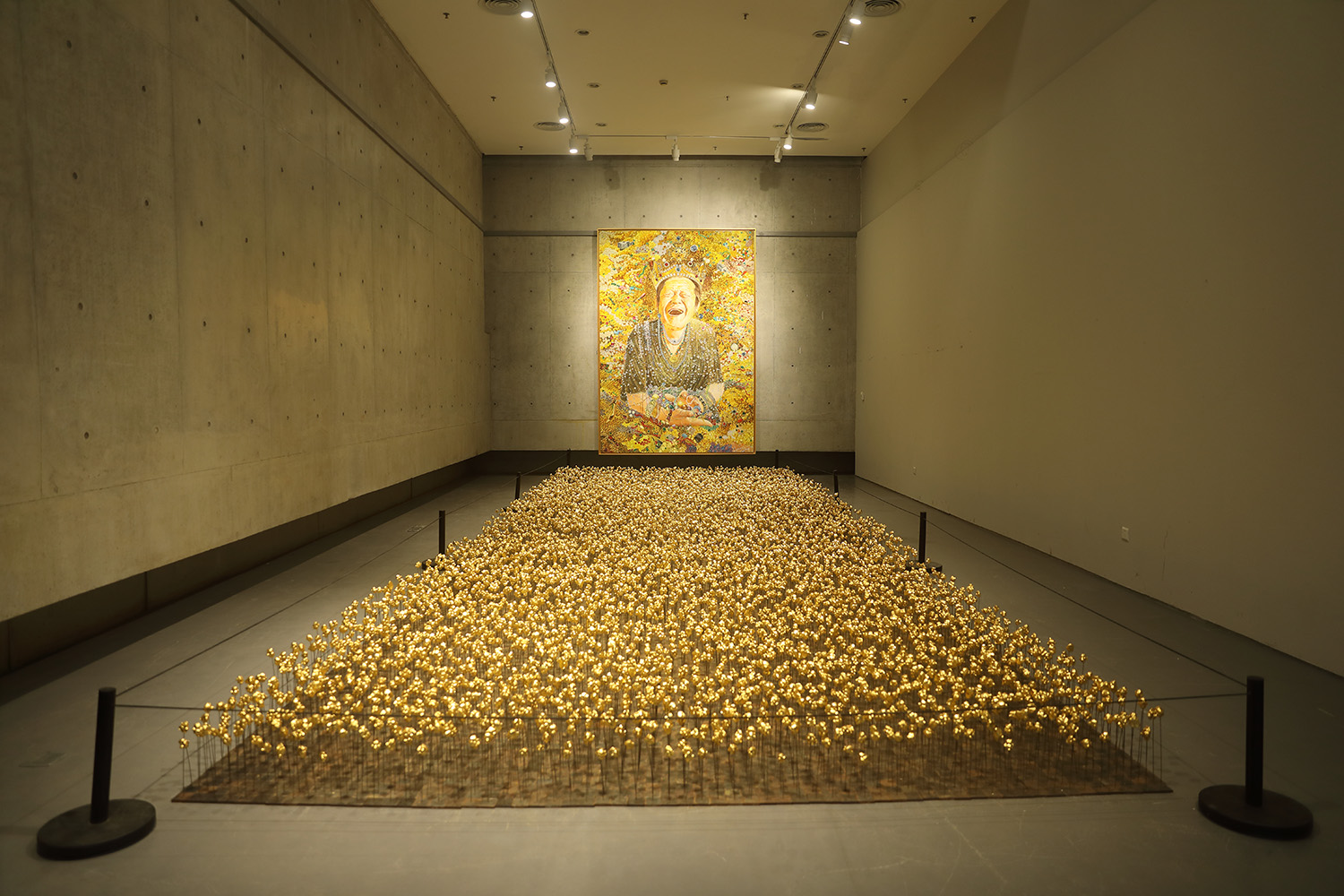Shows
Shenzhen Biennale: Open Source


Two concepts are at the heart of open-source models: decentralization and open collaboration. When applied to technological development, the consequence is that anyone can access the guts of something, modify it, and share an augmented variation of the original product, at times with strangers riffing off each other’s work to cobble together something new. Essential tools have been built with this type of teamwork, from operating systems to web browsers and the backbone of cryptocurrencies.
When the curators of the first Shenzhen Biennale—Beijing-based Tang Zehui and Janet Fong—chose “Open Source” as the theme of the event, one couldn’t be faulted for expecting interactivity, transparency and smoothly integrated tech. One would quickly arrive at disappointment.
Part of the disenchantment was rooted in the tired trope of framing Shenzhen as the “crown jewel of China’s Open and Reform Era,” and as a point of convergence where pluralism and innovation define the city’s identity. The rest was that the art just wasn’t that exciting or relevant to the theme of the presentation.
In the foyer of the Luohu Art Museum, Yohan Han’s Laundry Sequencer (2018) consisted of pieces of white clothing hanging on four clotheslines, with color blocks and patterns projected onto them, and sounds of running water playing. It wasn’t clear why a setup found outside of windows within walking distance from the installation were pertinent to the show. Past the deserted information desk, we found Fang Lijun’s 2006+2011 (2006/12), which consists of a rectangular field of what appears from a distance to be gilded flowers sprouting from the floor before a painting of a crying woman overwhelmed by gold, gems, jewels, pearls and other specimens that announce overt affluence. Upon closer inspection, the “flowers” are in fact miniature heads, all bald and with warped features—the artist’s trademark—representing the country’s many farmers that left their fields in (often futile) search of new riches. This is heavy-handed commentary about divisions in wealth in contemporary China, as a single individual can drown in opulence while many others are left in the dust. The artist said that creating the work brought him “liberation,” ostensibly from the consumerism and materialism that surrounds him, though few viewers are expected to know the pains of swimming in vaults of cash like Scrooge McDuck.
The canvases and video screen of Leung Mei Ping’s Made in Hong Kong (2006–18) occupied their own gallery. Two hundred paintings created in the hotel-art style vastly adopted by the art workers of Dafen Village in Shenzhen, who at one point churned out 60 percent of the world’s new oil paintings, offer scenes that reinforce the stereotypical activities of mainland Chinese visitors to Hong Kong: visit Disneyland, buy cans of milk powder, queue in front of cosmetic stores and for new Chanel handbags. Meanwhile, in a video captured at Dafen, the artist records a painter from the community speaking about the difficulties of sustaining a livelihood from knocking out cheap, mass-produced copies of popular images. This reaches for the ideas behind open source cooperation, yet ends up off-mark.
A couple of artworks edge closer to the theme, but still aren’t homeruns. Arnd Christian Müller’s Malleus–Sound Field (2017), an installation of 92 steel hammers suspended upside-down to function as wind chimes, requires participants to pull and shove the tools for random melodies, though the moment passes quickly and stillness, the status quo, is restored in the windless and soundless exhibition hall.
Also touching on interactivity, Shen Piji’s The Old Grateful Feeling (2018) comes with instructions for visitors to exchange any object for an oyster shell autographed by the artist. (The scant swaps were often pocket litter or empty PET bottles.) A totem of four Sony CRT television sets was erected in the center of the heap of mollusk exoskeletons, silently showing the artist playing a guqin—a musical instrument with seven strings—at night in the alleys of Hubei, an urban village in Shenzhen with five centuries of history, located two blocks north of the biennial’s venue. The artist is mostly ignored by passersby; after playing three classical compositions, he smashes the instrument (the guqin’s pieces hung above the tower of screens). Shen’s performance took place in 2016, when Hubei, one of the last patches of Shenzhen’s land that hadn’t been redeveloped for hulking real estate projects, faced demolition. The artist flicks at lamenting the erasure of the village’s original state, as the characters that form Hubei’s name translate to “lake” and “shell,” and The Old Grateful Feeling comes closer to being an open source project than any other artwork on show. This takes us into choppy waters, because remembrance of Hubei’s existence runs counter to the official narrative of Shenzhen being a blank slate before the Chinese Communist Party implemented reforms four decades ago.
“Open Source” failed to live up to the ideals that the curators attempted to tap into, but perhaps inadvertently manifested something else that is found so commonly in Shenzhen, a hub for product development for brands across the globe. As ideas are refined and remixed in prototypes, most iterations fail to perform optimally, though each version takes the creator’s object a tad closer to a releasable state. This show could be weighed as one of those intermediate stages—practice for something better in the future.
Brady Ng is ArtAsiaPacific’s Guangzhou desk editor.
The inaugural Shenzhen Biennale is on view at the Luohu Art Museum, Shenzhen, until July 29, 2018.







